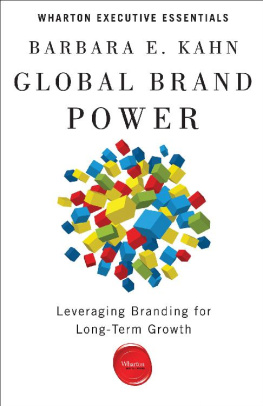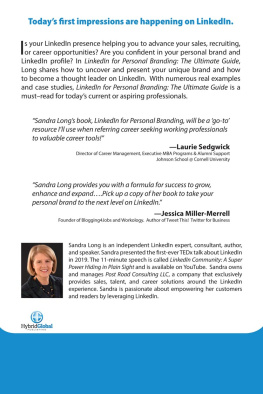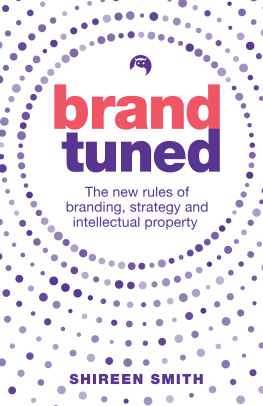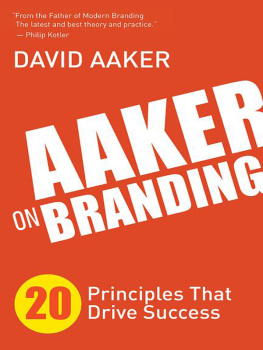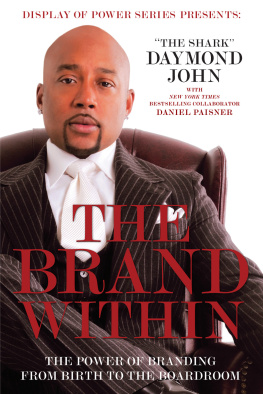Introduction
Brands today must be global . They must offer value across different countries and diverse cultures: that is, they must be porous enough to allow for reasonable brand and product-line extensions, broad enough to change with dynamic market conditions, consistent enough so that consumers who travel physically or virtually wont be confused, and precise enough to provide clear differentiation from the competition.
In this age of total transparencyone slipup can go around the world via social media instantaneouslya strong global brand must express the same core meanings regardless of the market it is in. If those core brand meanings are not stable across markets, the authenticity of the brand is threatened. Consumers who travel virtually or physically will be confused, and the brand will lose its power. If a brand is inconsistent in its central values, consumers will surely point out the discrepancies, and if they start doing this, the bottom line will suffer.
But brands and products are not the same thing. While brands must be global, products introduced to new markets should be implemented with a clear understanding of the local culture and conventions, and advertised, distributed, and priced with local market conditions in mind.
The distinction between brands and products became clear in 1985. Brands had existed before then, of course, but neither customers nor marketing managers genuinely understood their true power or realized that they had a life of their own independent from the products attributes.
Almost without exception, pre-1985 brands were product focused. Think Coca-Cola, Gillette, Nabisco, Campbell, Lipton, Goodyear, and Kellogg. Each one of these wasand still isa very, very strong brand, but each one also, at least initially, was identified with specific product attributes, which limited growth potential and global credibility. Other very strong brands that were developed before 1985, such as Oldsmobile and Kodak, became so closely associated with specific product characteristics that in spite of worldwide brand awareness, they offered little hope of future market success.
Before 1985, consumers were willing to pay a price premium for certain brands, but they rarely identified so closely with a brand that they would protest passionately if aspects of the brand marketing changed in a way they didnt like. Similarly, marketers were well aware of brands, but they didnt know how to build them, leverage them appropriately, or encourage consumers to establish relationships with them.
So what happened in 1985 to change all this? That was the year the Coca-Cola Company introduced New Coke and removed what the company subsequently called Classic Coke from store shelves.
There were good market reasons for developing the new product. Coca-Cola was a much bigger global company than Pepsi Cola, thanks to Cokes global expansion and domination of the restaurant and vending-machine markets. However, the market share of Coca-Cola was lagging in supermarkets, the only channel where consumers could choose for themselves. Pepsi Cola had launched the Pepsi Challenge advertising campaign, which suggested that consumers preferred the taste of Pepsi to that of Coke. In response, after significant market testing, Coca-Cola launched New Coke, which had a product taste that consumers seemed to prefer in blind taste tests.
What Coca-Cola executives did not realize at the time was that consumers were not making soft drink choices based on critical product attributes such as taste but instead were choosing products because of their loyalty to the brand. For years, the Coca-Cola brand was associated with small-town Americana. Coke was featured in Norman Rockwell ads, in World War II Support Our Troops campaigns, and in Christmas-time celebrations. Coca-Cola traveled the world with the US Olympic team. The quintessential American TV familyOzzie, Harriet, David, and Ricky Nelsondrank Coke. Coca-Cola was the real thing. Coke was it. When Coca-Cola executives removed Classic Coke from the shelves, they removed more than a product; they took away something dear to their customers hearts. Subsequent market research revealed that consumers felt betrayed. I couldnt be more upset if my husband cheated on me, one customer complained.
This shocking reaction proved to Coca-Cola and the world that consumers were loyal to brands in and of themselves, and not necessarily to product features. This realization radically changed the way both academics and business practitioners thought about brands. Now, more than 25 years later, we have amassed significant knowledge about how branding works. Marketing managers understand that brands are an investment; they have value in and of themselves, over and above the tangible capital invested.
With this new knowledge, managers have been able to create cohesive long-term global-brand strategies that can provide substantial growth opportunities for a firm. Strong brands have higher market share, higher prices, and higher margins. Since 1985, the growth of the top 100 brands has exceeded the growth of the advanced economy GDP by more than 35%.
Consumers have responded as well. Although there were strong brands prior to 1985, new marketing strategies of well-executed brands have created even more powerful loyalties. A new generation of consumers no longer thinks it odd to self-identify with a brand. Consumers proudly wear brand logos. Brands are mentioned often in popular TV shows, songs, and books because they quickly establish character dimensionality. And when Steve Jobsa consummate marketer who understood the new global love affair with brandspassed away, consumers responded by placing flowers at the appropriate altar, the Apple stores. Brands have truly become a religious experience.
This growth in the power of global brands is not by chance. We have learned how to build such brands, how to position them appropriately, how to create emotional bonds, and how to continually reposition these brands to keep pace with changing market dynamics. We have also learned how to measure these emotional and symbolic associations and account for the economic value of brands and the price premiums branded goods can enjoy. Bottom line: We now know how to leverage and manage brands to help the firm grow.
Good brands are not accidents. Their long-term value to the firm has to be developed and managed over time. The best brands form relationships with their customers. In doing so, brand meanings may also be co-created through social media communities and customer-engagement strategies. Grappling with all these issues is the challenge that every marketer faces.
Moving from Product-Focused to Customer-Focused Brands
To understand how branding strategies have changed, we need to look at the basic mechanics of a market. In the simplest terms, a market is an exchange between buyers and sellers. If you think of the extremes of the continuum, you can have a sellers market, in which the seller has all the power, or a buyers market, where the buyer has ultimate choice and therefore the market power. Obviously, branding strategies should differ as a function of the nature of the market.

